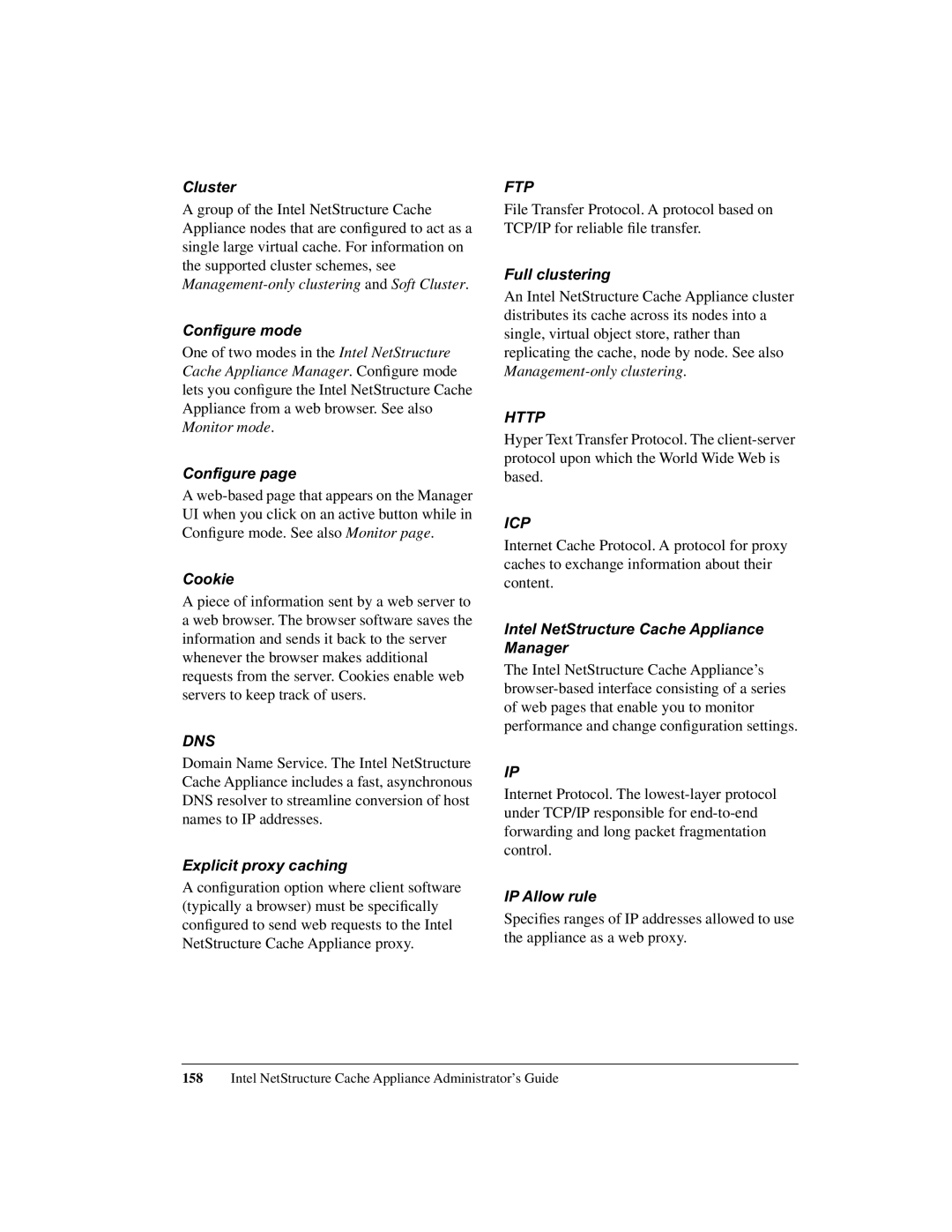Cluster
A group of the Intel NetStructure Cache Appliance nodes that are configured to act as a single large virtual cache. For information on the supported cluster schemes, see
Configure mode
One of two modes in the Intel NetStructure Cache Appliance Manager. Configure mode lets you configure the Intel NetStructure Cache Appliance from a web browser. See also Monitor mode.
Configure page
A
Cookie
A piece of information sent by a web server to a web browser. The browser software saves the information and sends it back to the server whenever the browser makes additional requests from the server. Cookies enable web servers to keep track of users.
DNS
Domain Name Service. The Intel NetStructure Cache Appliance includes a fast, asynchronous DNS resolver to streamline conversion of host names to IP addresses.
Explicit proxy caching
A configuration option where client software (typically a browser) must be specifically configured to send web requests to the Intel NetStructure Cache Appliance proxy.
FTP
File Transfer Protocol. A protocol based on TCP/IP for reliable file transfer.
Full clustering
An Intel NetStructure Cache Appliance cluster distributes its cache across its nodes into a single, virtual object store, rather than replicating the cache, node by node. See also
HTTP
Hyper Text Transfer Protocol. The
ICP
Internet Cache Protocol. A protocol for proxy caches to exchange information about their content.
Intel NetStructure Cache Appliance Manager
The Intel NetStructure Cache Appliance’s
IP
Internet Protocol. The
IP Allow rule
Specifies ranges of IP addresses allowed to use the appliance as a web proxy.
158Intel NetStructure Cache Appliance Administrator’s Guide
